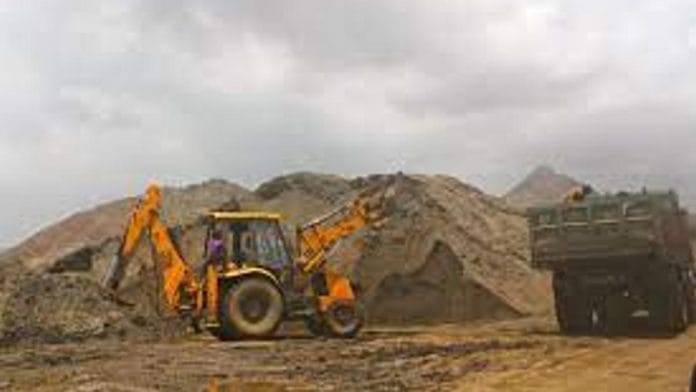Patna: The attack on three officials of Bihar’s Mines and Geology Department, allegedly by the sand mining mafia in Bihta town and hundreds of locals, has left officials shocked. A video of a woman officer being dragged and beaten up went viral Monday.
“This was not the first attack on mine officials by the sand mafia, but the scale and intensity of violence was unprecedented,” Mohammad Nayyer Iqubal, director of the mines department, told ThePrint Tuesday.
“We have lodged an FIR and around 50 persons have been arrested. We have also decided that in the future raiding teams will be sent with adequate armed forces,” he added.
Iqubal also appeared puzzled by the local population’s support for the illegal sand miners. “There are two villages and all of them seemed to be working for them,” he said.
The three officers were in Bihta to check the overloading trucks and illegal sand mining in the area. At Bihta’s Koilwar Bridge, though, they were surrounded by illegal sand miners, who assaulted and abused them.
Patna Senior Superintendent of Police (SSP) Rajiv Mishra confirmed the 50 arrests, adding that they “identified the culprits using the viral video”.
Speaking to ThePrint, Janak Ram, former minister of mines and geology department, highlighted the lack of fear among the sand mafia. “There is a lot of money in sand mining. When I tightened the screws, the revenue shot up from Rs 1,600 crore to Rs 2,100 crore. The fact is that illegal miners are getting government patronage and the fear of law has evaporated. The cost of sand is perhaps the highest in Bihar. Here It is Rs 6,000 to Rs 8,000 per CFT (cubic feet), which is three times more than the cost in Uttar Pradesh,” he said.
Also read: ‘Sand mafia, goonda tax’: Illegal mining is no secret, but still an election issue in Punjab
Sand mining boom in Bihar
After the bifurcation of Bihar and Jharkhand in 2000, the deposits of coal and iron became concentrated in the latter, leaving Bihar with sand. This resulted in the rise of sand mining in Bihar on the stretch along the Ganga River, with Bhojpur district being one of the main locations for such activity.
“JCBs and Poclain machines are brought during the night hours and the local population works as labourers. Everyone gets kickbacks — the local police, mines officials and politicians,” said an official of the state’s mines department who wished to not be named.
In 2017, Bihar had imposed a complete ban on sand mining, but it only led to a boom in illegal mining, pushing prices up further. Janak Ram pointed out that the state was losing revenue to the tune of Rs 1,000 crore per year.
Environmental concerns
Illegal sand mining has also led to concern among environmentalists. “Unscientific mining of sand alters the basin of the river. Moreover, most mining takes place near bridges to get access to trucks, leading to the safety of the pillars supporting the bridges being compromised,” said environmentalist Dinesh Kumar Mishra speaking to ThePrint.
The author of books such as Trapped! Between the Devil and Deep Waters and Refugees of the Kosi Embankments, added that this is down to the powerful nexus between officials, politicians and contractors. “That is why we are seeing more politicians with links with sand mining,” he said. In the state, politicians like RJD leader Arun Yadav and former party leader Subhash Yadav are allegedly involved in illegal sand mining activities, according to media reports.
In December last year, the state’s mines department had decided to form a dedicated force to curb illegal sand mining and transportation of minerals in the state. The decision was taken after a series of violent attacks on mines officials in Patna, Bhojpur, Rohtas, Saran, Vaishali and Aurangabad districts.
Five months on, the department appears to be still short of forces and remains vulnerable to violent attacks by illegal miners.
(Edited by Zinnia Ray Chaudhuri)
Also read: Crater-sized quarries, bold sand mafia — why Punjab’s mining scandal is a political hot potato






